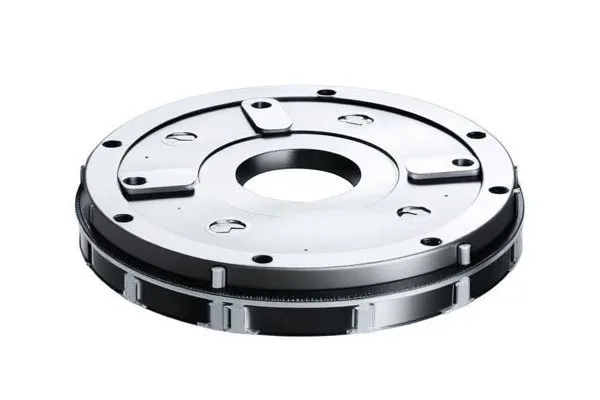Ever wondered how precision parts are crafted to perfection? The world of CNC aluminum milling is like a well-oiled machine—precisely engineered, technically proficient, and incredibly fascinating. Think of it as sculpting with digital chisels, where aluminum transforms into art and functionality through intricate processes. If you’re eager to embark on a journey through the realm of CNC aluminum milling, then buckle up! This guide will unravel the intricacies, benefits, applications, and much more about this marvel of modern manufacturing.
What is CNC Aluminum Milling?
CNC aluminum milling combines computer numerical control (CNC) technology with the properties of aluminum to create complex parts and components. Imagine having a computer-guided robot artistically carving away excess material from a solid block of aluminum. This process not only enhances precision but also optimizes efficiency, giving rise to intricate shapes and designs that would be nearly impossible to achieve manually.
The Basics of CNC Milling
CNC milling involves using a programmable computer to control the movement of tools and machinery. The machine operates by following a set of coded instructions, typically generated through Computer-Aided Design (CAD) software, translating designs into a series of movements. This method ensures unmatched accuracy, making it a favorite in industries like aerospace, automotive, and manufacturing.
Why Choose Aluminum for CNC Milling?
Aluminum is a popular material for CNC milling, and for a good reason. It’s lightweight yet strong, highly malleable, corrosion-resistant, and great at dissipating heat. Imagine trying to craft parts from a heavy, rust-prone metal; that would be a nightmare, right? Aluminum saves engineers time and effort while ensuring durability and functionality.
The Advantage of Using CNC Aluminum Milling
The Process of CNC Aluminum Milling
Navigating through the process of CNC aluminum milling is like peeling an onion—you may need to remove layers, but each one reveals something valuable. Let’s break down the steps to understand how the magic takes place:
Every project begins with a design phase. Engineers and designers use CAD software to create 2D or 3D models. This is where creativity meets technology. Picture an artist sketching a masterpiece, but instead of using a pencil, they’re utilizing software that can visualize the final product.
Once the design is ready, the next step involves selecting the right tools for the job. Different types of milling cutters serve various purposes—like a chef choosing the right knife for different ingredients. Get this step wrong, and you could end up with a half-baked piece of work!
Here comes the meticulous setup. The CNC machine needs to be calibrated to handle the specified dimensions and the type of aluminum being used. Think of this as the machine getting into its workout gear—everyone performs better when they’re prepared!
This is where the sparks fly—quite literally! The CNC machine begins milling, removing material based on the programmed instructions. It moves the milling cutter across the surface, gradually transforming the raw aluminum into the desired shape. It’s like watching a sculptor chip away at a block of marble, revealing a stunning sculpture.
Once the milling process finishes, it’s time for finishing touches. This could involve deburring, polishing, or anodizing the part. Quality control checks ensure that the dimensions and specifications conform to the original design. Imagine getting a report card back—did you make the grade?
Applications of CNC Aluminum Milling
So, where exactly do you find CNC aluminum milling in action? The applications are diverse, and the potential is huge. Let’s explore some areas where this technology shines:
Aerospace Industry
In aviation, every ounce counts. CNC aluminum machining provides aircraft parts that are lightweight yet incredibly strong. From brackets to engine parts, precision is paramount in ensuring safety and performance.
Automotive Manufacturing
Cars are modern-day marvels, and they rely heavily on CNC aluminum milling for components ranging from engine casings to transmission parts. The balance of strength and weight makes aluminum the go-to material for high-performance vehicles.
Robotics
In the world of robotics, CNC milling paves the way for intricate parts that must fit together perfectly to create intelligent machines. Think about how vital it is for each component to work seamlessly with the others—like a well-rehearsed dance performance!
Electronics
With the rise of smart devices, CNC aluminum milling is essential for creating housings and casings. The perfect fit is crucial for protecting delicate components while ensuring heat dissipation.
Prototyping
For startups and inventors, rapid prototyping using CNC aluminum milling allows individuals to quickly test and iterate designs—think of it as an agile workout for the creative mind!

The Future of CNC Aluminum Milling
The world of CNC aluminum milling isn’t standing still; it’s evolving at lightning speed. With advancements in technology, we’re seeing exciting trends emerge that will shape the future of milling:
Automation and AI Integration
As AI technology improves, we’re likely to see even more automation in CNC machines. Picture a machine that can “learn” from previous jobs, optimizing setups and reducing error rates—imagine the potential for efficiency!
Upgraded Materials
Researchers are continually developing advanced aluminum alloys, enhancing properties like strength and corrosion resistance. This means that in the future, we can expect even better performance from CNC milling processes.
Sustainable Manufacturing
As industries embrace sustainability, CNC aluminum milling’s lower material waste and energy consumption will attract more companies looking to green their manufacturing processes. It’s like giving the planet a much-needed deep clean.
3D Printing Synergy
Combining CNC milling with 3D printing provides the best of both worlds—layering materials while also enabling precision cutting. Think about the creativity that this can spark in the engineering community!
Essential Equipment for CNC Aluminum Milling
To dive deeper into the world of CNC aluminum milling, one must also consider the essential equipment. This is the toolkit that ensures the milled part emerges as intended:
CNC Milling Machine
Think of this as the star of the show. A good CNC milling machine can handle various materials and provides the precision needed for aluminum.
Tool Holders
The quality of tool holders matters in maintaining accuracy. They keep milling cutters intact during the milling process—like a tight grip on a steering wheel while navigating a winding road.
Cutting Tools
Selecting the appropriate cutting tools can make or break your milling job. High-speed steel (HSS) and carbide tools are common choices, serving different purposes like a trusty toolset for a handyman.
Workholding Devices
Ensuring that the aluminum block stays steady during milling is crucial. Jigs, vises, and clamps keep the workpiece secure and safe from accidental jumps—a must-have in every milling operation!
Software
Last but not least, the software running the CNC machine is pivotal. From CAD programs to CAM integrations, software bridges the gap between ideas and physical products. It’s like the conductor guiding an orchestra—everything must align harmoniously!
Tips for Effective CNC Aluminum Milling
Now that you’re well-versed in the basics of CNC aluminum milling and its fascinating applications, let’s wrap up with some practical tips to enhance your machining experience:
Manipulating the speed and feed rates can greatly impact the quality of your finished product. Too fast, and you risk damaging the material; too slow, and you waste time. It’s like finding the perfect rhythm when dancing—balancing energy and style is crucial.
Investing in high-quality cutting tools pays off in the long run. They reduce wear and tear while enhancing the finished product’s quality. Think of it as sharpening your kitchen knives—you need them to slice through materials smoothly!
Regular maintenance is like giving your CNC machine the best care possible. Keeping parts lubricated and ensuring cleanliness can help avoid potential mishaps, extending the machine’s lifespan and performance.
Aluminum machining generates heat, and excess heat can warp or damage parts. Using coolant effectively can enhance tool life and product quality, much like how a little ice in your drink makes it refreshing.
Before jumping into full production, consider creating a test piece. Prototyping provides insights that can save you from costly errors down the road—just like proofreading before submitting an important document can save you embarrassment!
Conclusion
In the grand tapestry of manufacturing, CNC aluminum milling stands as a testament to the ingenuity of modern technology. By merging precision, efficiency, and the incredible properties of aluminum, we pave the way toward a future filled with innovative designs, sustainable practices, and seamless production processes. Whether you’re an engineer, a hobbyist, or just curious about the world of machining, embracing CNC aluminum milling can open doors to boundless possibilities. So, what’s stopping you? The world of CNC aluminum milling is waiting for you to take the plunge!





